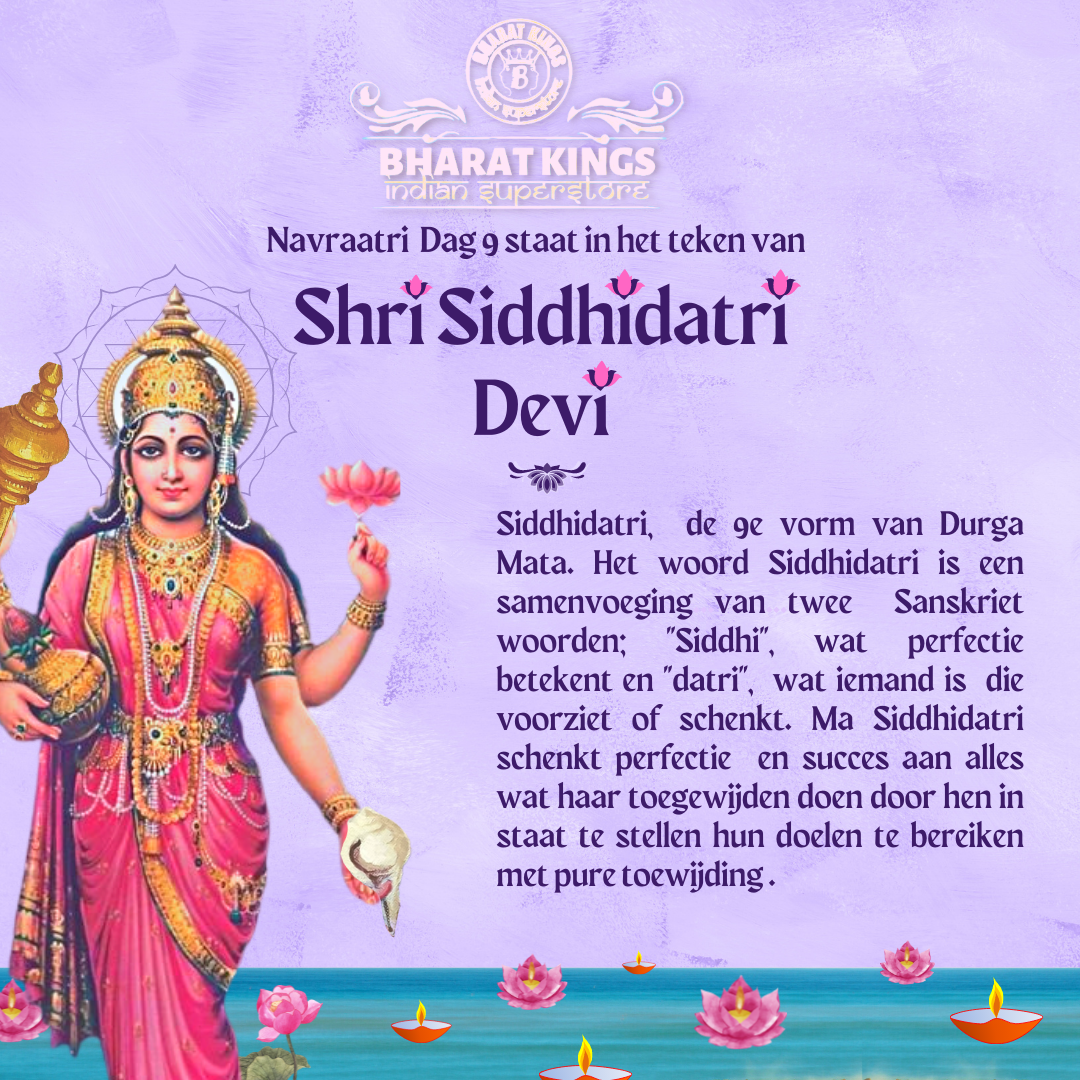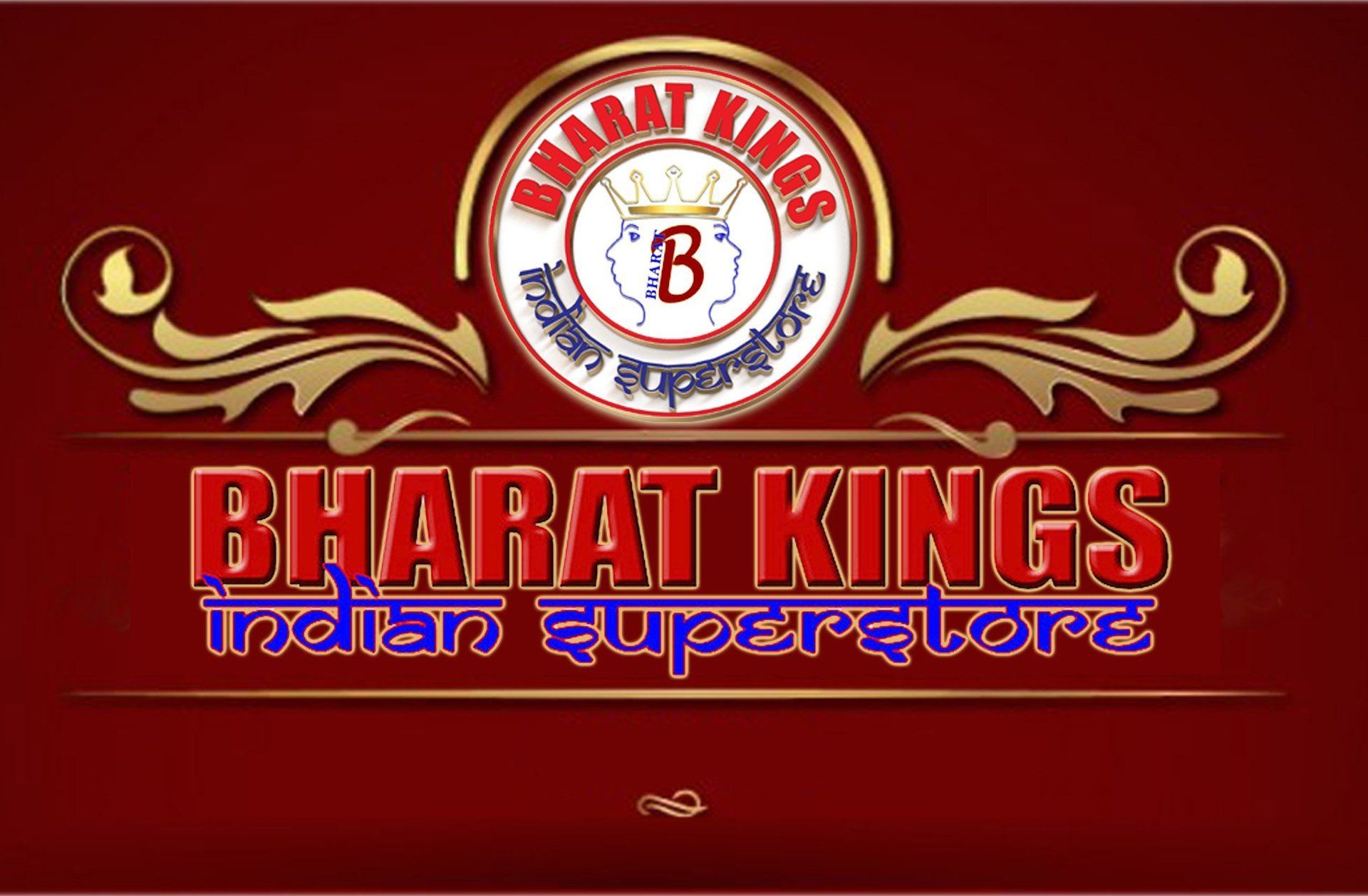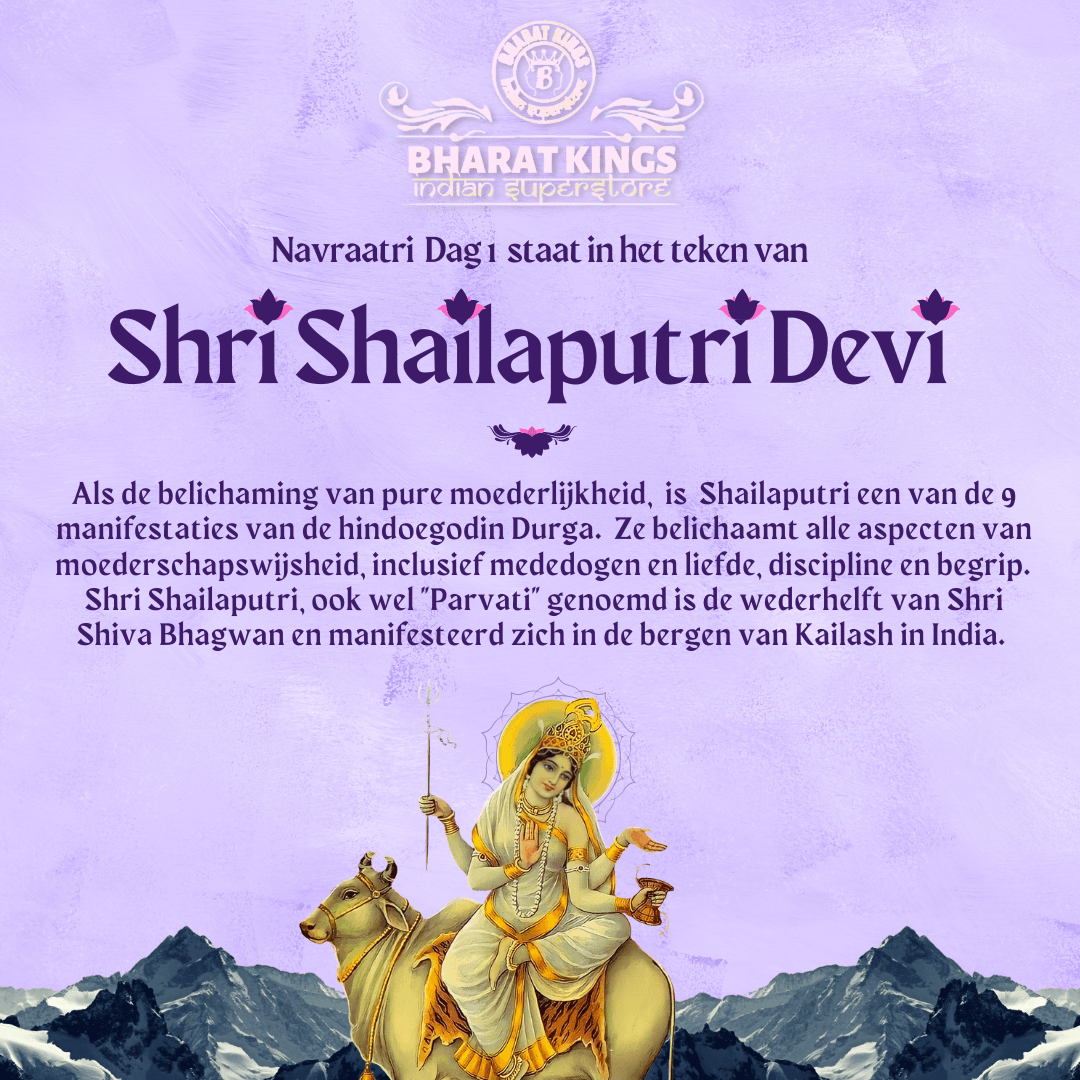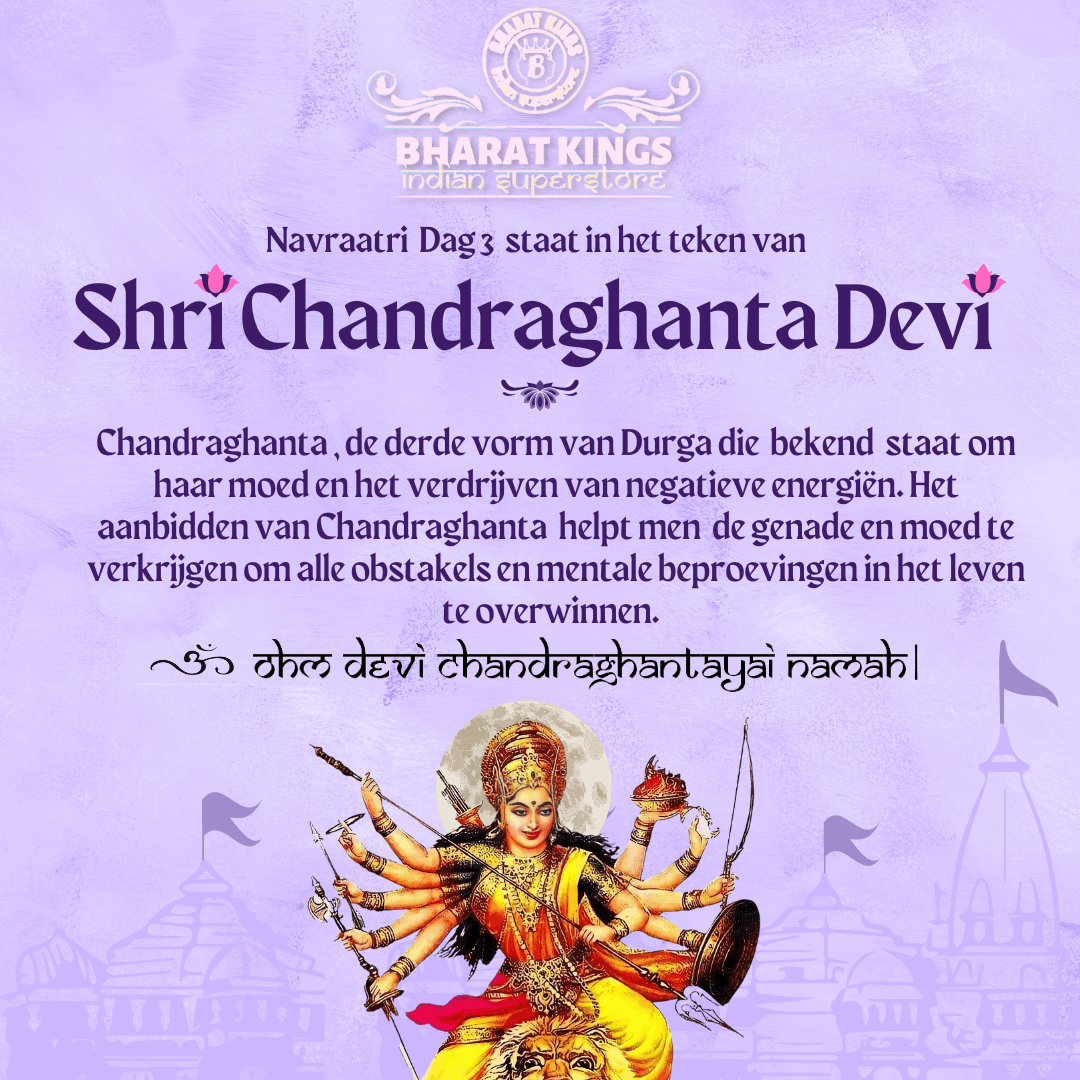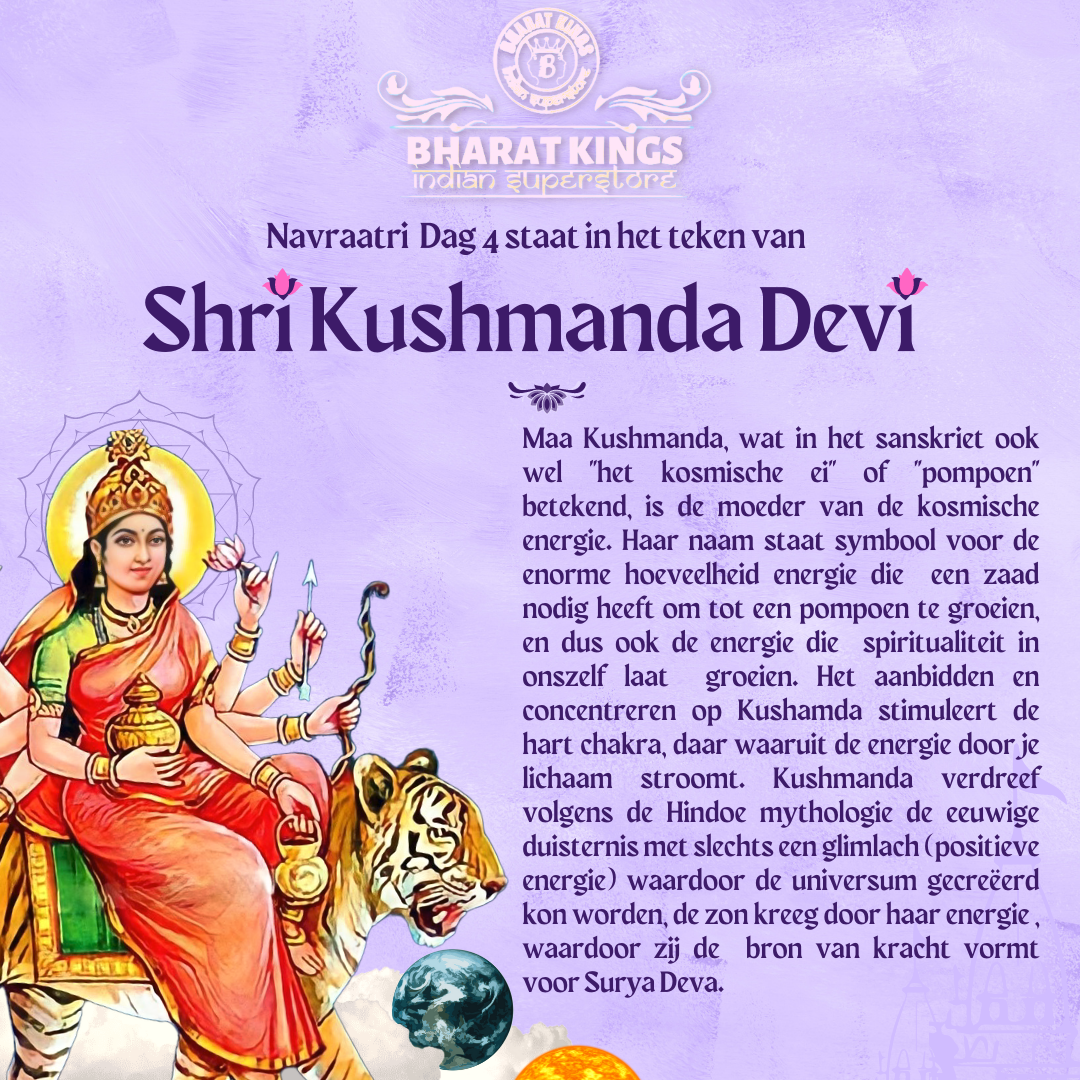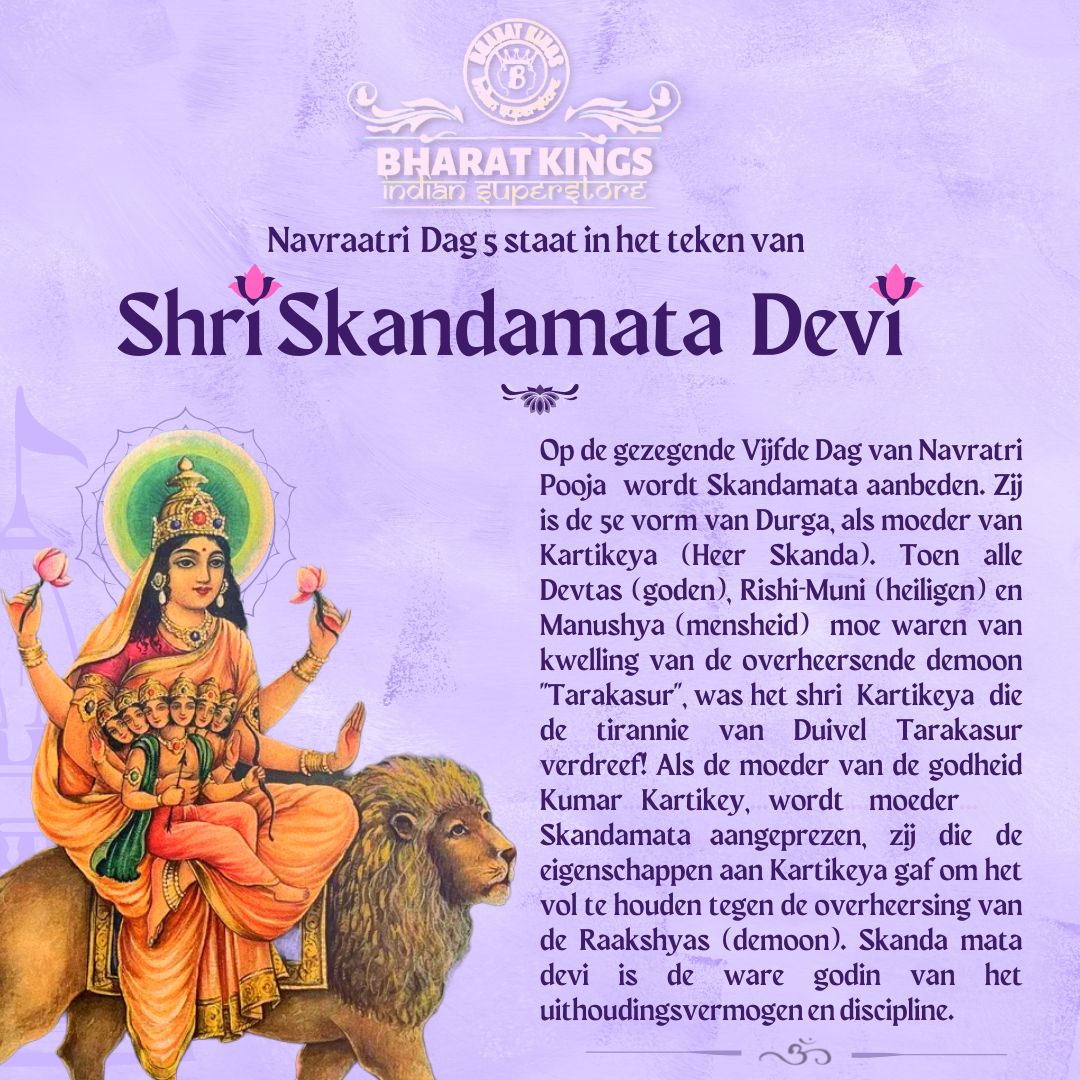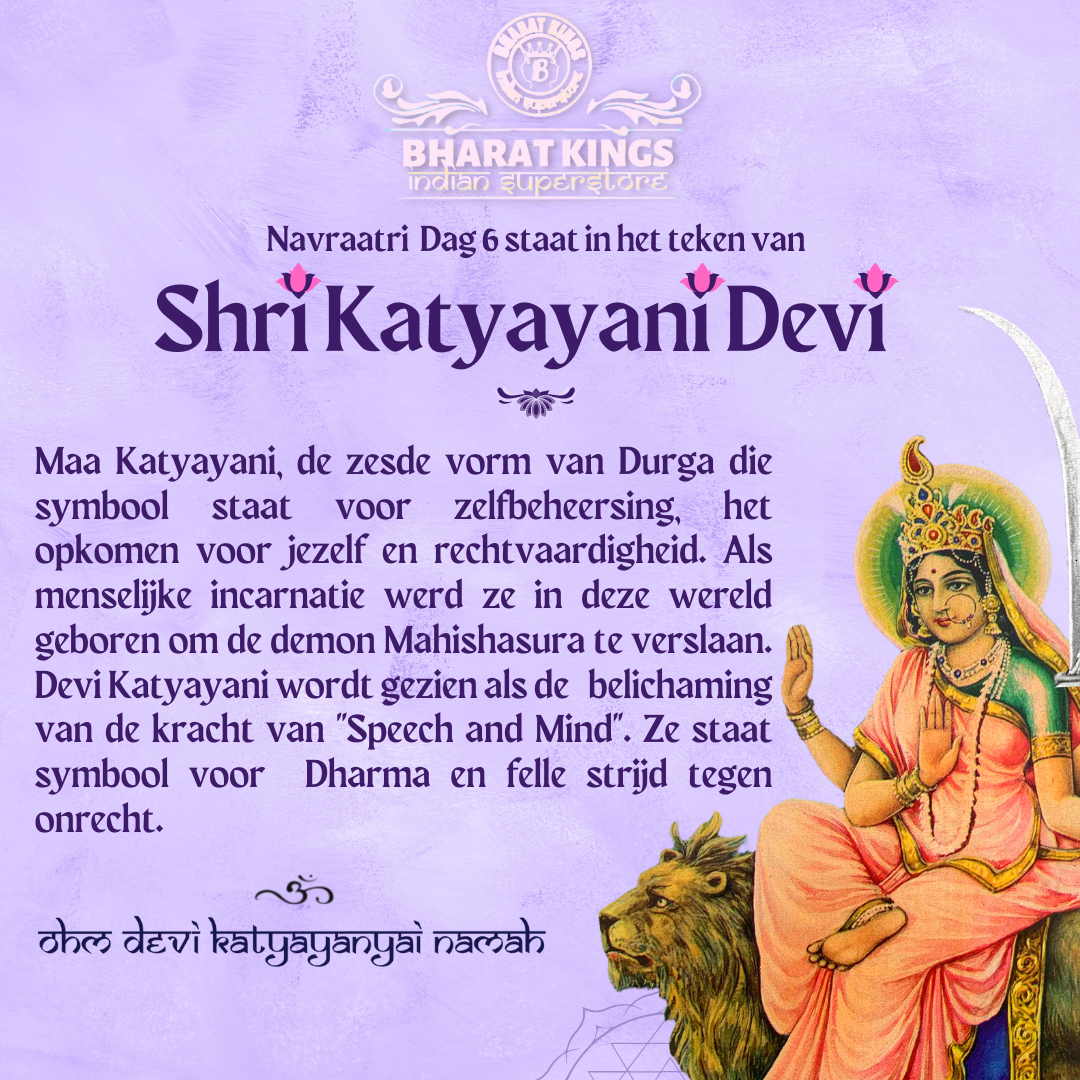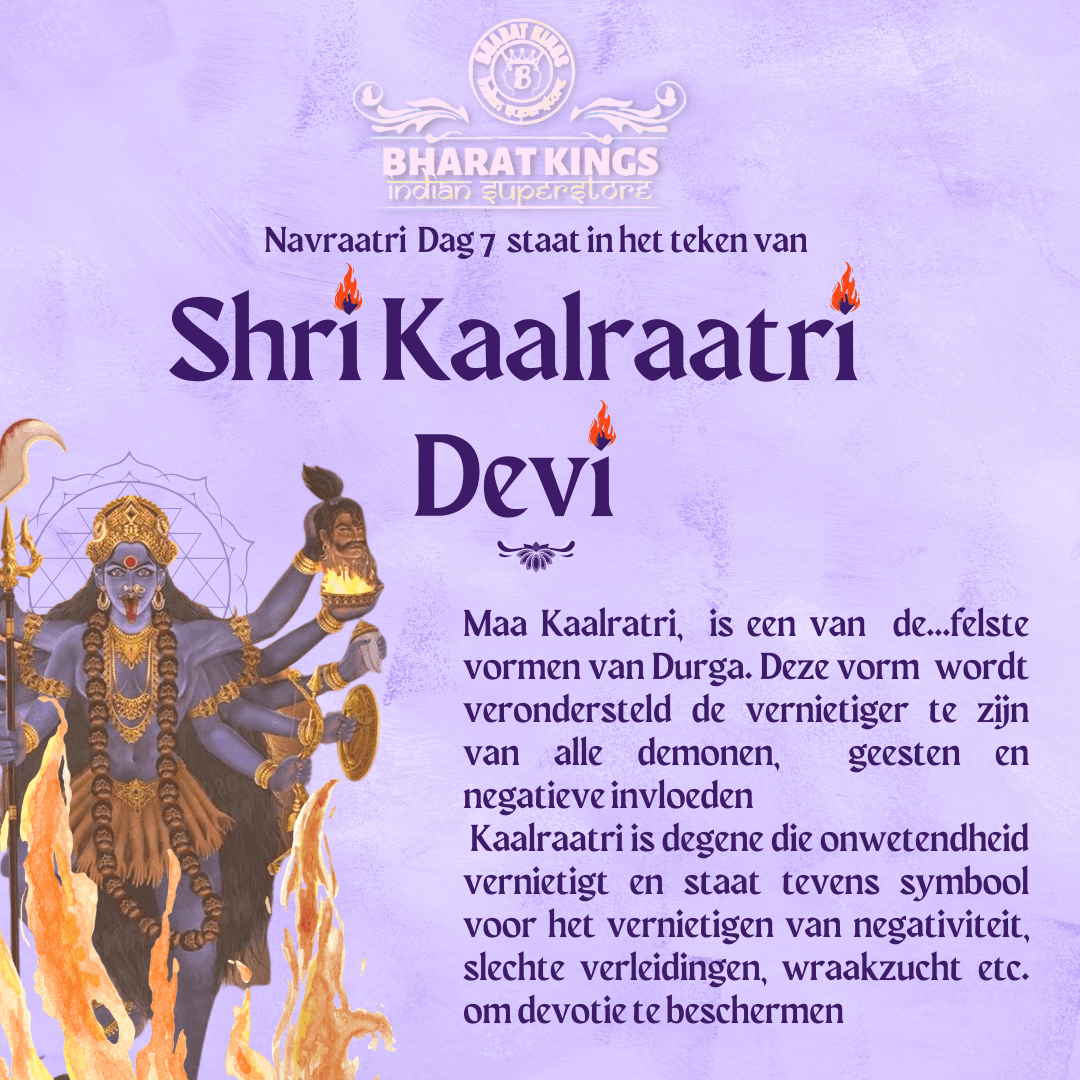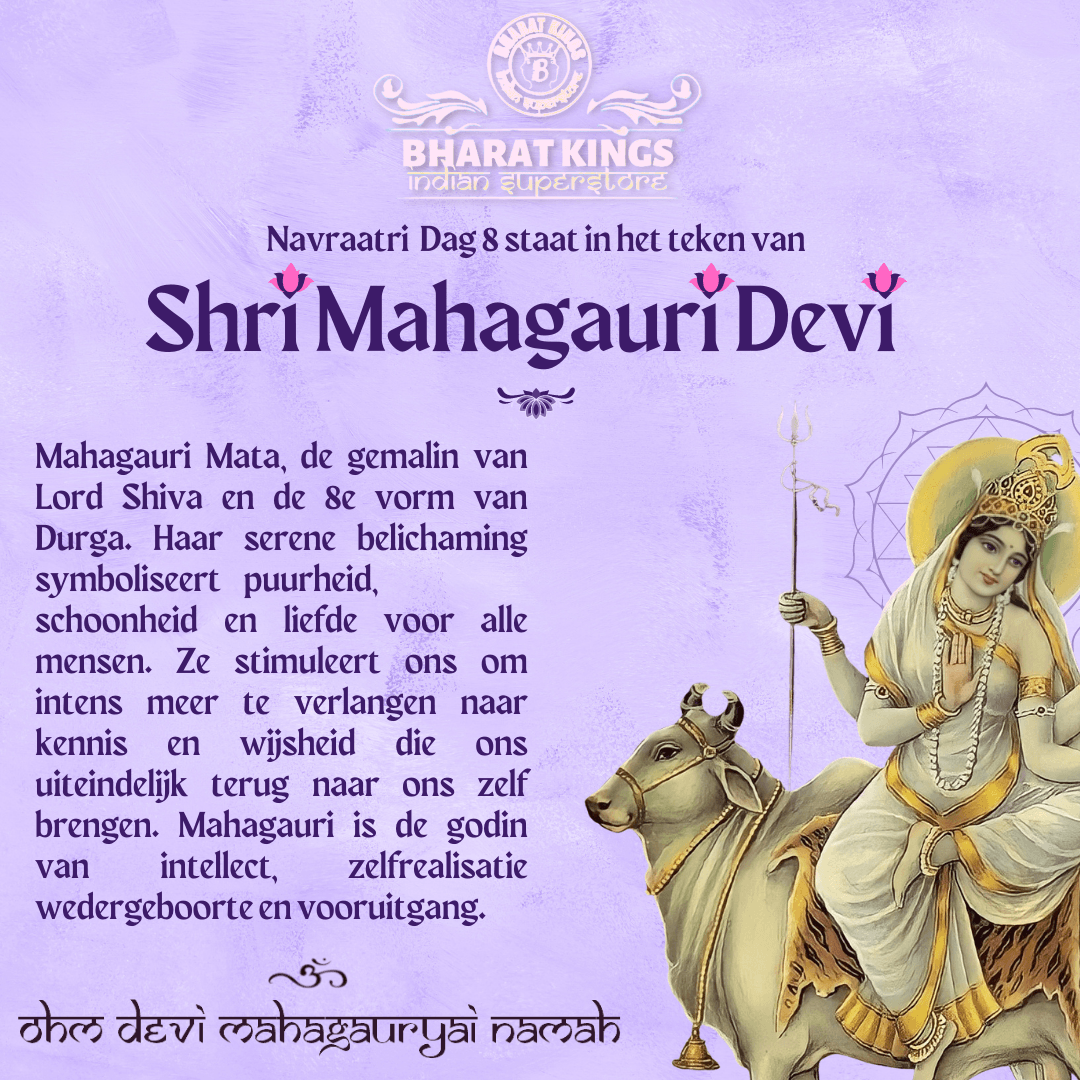Buy BK products online via Webshop
Navratri Pooja
Navratri?
Which mantra is for Navraatri?
Usually during the durga rituals specific mantras are recited with each action
In most cases this creates confusion for a novice durga devotee.
Here I have given a simple durga mantra that can be used to recite the entire durga ritual.
"Ohm aing Hreem Kleem Chamundaye viche"
Recite this durga mantra throughout the process.
How to do Navraatri Pooja? Buy online
At every pooja or hawan ritual it is customary to cleanse the surroundings and yourself beforehand. During the cleansing a little water is taken in the left palm and then the relevant body part is touched with three fingers (ring finger, thumb and middle finger).
Ohm waang mè aasyastoe (your mouth)
Ohm Nasor with prano astoe (both your nostrils)
Ohm akshoor mè chakshoor astoe (both your eyes)
Ohm karnyoor mè shrootam astoe (both your ears)
Ohm baahor me balam astoe (both your upper arms)
Ohm oerwor mè oodjo astoe (both of your ears)
Ohm aaristhaani mè angaani tahoesthanwaa me sahaa santoe
(your head and whole body)
Cleaning the environment:
Ohm aapawitrah pawitroowah sarvah stanghato piewah, yah smaret pundari jawsham sa wah bhyaahtanah soechihie
(''Ohm, if someone or something is impure, purify it in spite of all circumstances into pure purity. He who remembers pundharikaksham (name for Vishnu ''thou with lotus eyes'' ) becomes pure both outwardly and inwardly.''
*Step 1, prepare
Preparation requirements:
1x Durga incense
1x Durga akhand deep (this burns for 9 days)
1x Durga Yantra
Prepare for the festival by lighting a slide and incense.
place a Yantra (instrument to gather the powers you call upon) in front of the statue. This Yantra functions as a tabijh (protection) you can keep it with you when you go outside or you can place it at your front door to ward off negative influences.
Mantra while lighting the diya
“Ohm shree mahalakshmi karo tu kalyaanam aaroghyam sukh sampadam, mama shatroe winaashaaye, deep dyotir namoh astute”
Worshipping Ganesha
At every dev/devi pooja, it is customary to worship ganesha before doing pooja for other gods.
This can be done with the following mantra:
Vakra-Tunndda Maha-Kaaya Suurya-Kotti Samaprabha |
Nirvighnam Kuru Me Deva Sarva-Kaaryessu Sarvadaa ||
(Salutations to Sri Ganesha, who has a curved trunk, whose body is grand and whose splendor is comparable to a million suns.
O Deva, please make my obligations free from obstacles, by showering your blessings and being present during the pooja, always.)
Ohm shree ganeshaaye namah
Durga dyanam
When we do pooja for Durga mata it is customary to invite and worship her to sit for the pooja by means of Durga mantras or other verses of Durga mata. Recite the Durga mantras with a flower in your hand and concentrate on maa Durga. Here are some common Durga mantras:
Ohm sarvamangala mangalye shive sarwaartha sadhike, sharanye triyambake gauri narayani namoh astute |
Ohm sarva svarupe sarveshe sarva shakti samanvite bhaye bhyas trahie no devi durge devi namoh astute |
Ohm Devyai Mahaa-Devyai Shivaayai Satatam Namah |
Namah Prakrtyai Bhadraayai Niyataah Prannataah Sma Taam
Ohm ya devi sarva bhuteshu shakti rupena samstitha namastasye namastassye namastasye namoh namah |
Nav Durga mantra (mantra for the nine manifestations of Maa Durga)
Prathamam Shailaputrii cha, Dvitiiyam Brahmacaarinnii |
Trtiiyam Candraghanteti, Kuushmaanddeti Chaturthakam ||
Panchamam Skandamaateti cha, Shashtthamam Kaatyaayneti |
Saptamam Kaalraatreti, Mahaagaureti Chaashttamam ||
Navamam Siddhidaatrii Cha, shree Navadurgaayeh Namoh astute |
Of course you can also simply say the Durga mantra several times
''Ohm aim hreem kleem chamundaye viche''
Step 2, Asnaan (Bathing image)
Ingredients for Asnaan:
1x Gangajal
1x Rosewater
1xKamal water
Cleanse the image and yantra with BHARAT KINGS pure gangajal
then with rose water.
Ohm shri Durgaaye namah snaanam samarpayami
(I bow to you mother durga, hereby offering you holy bath)
Dhaar (mixture of herbs)Offering
What you need to offer Durga Dhaar:
1x Durga Dhaar
1x Thali and Lota
1x lawang 100 grams
1x red flower
1x Kamal water
Put in a lottery:
Milk, Gangajal and Kamal water with special
Durga mata dhaar 18 pieces lawang mix this together.
Place a red flower on the lota and pour the mixture
in an unbroken beam over the statue and catch it in a thali.
You can say the Durga mantra several times
''Ohm aim hreem kleem chamundaye viche''
Save the mixture dhaar mix and use it in your
own bath and cleaning your house.
NOTE!! ALWAYS MAKE FRESH!!
Step 3, Tilak (decorating image)
Tilak Requirements:
1x Chandan yellow
1x Hardi
1x Kesar
1x Sindhur
1x Chandan red
With your right ring finger, place the following powders on Durga Mata's forehead:
*CHANDAN YELLOW * KESAR *SINDHUR *CHANDAN RED
Step 4, Vaastram (Donating clothes)
Requirements Vaastram:
1x Chunrie (veil)
1x durga mata clothes
1x jewelry
1x yagjopawitra (white yarn)
Dress up durga mata with the clothes pieces and jewelry
and put the chunrie on her head and the white yarn diagonally around her shoulders and waist.
Step 5, Offers
requirements offers:
1x Coconut
1x Paan leaf
1x Toelsie leaves
1x Soparie
1x Fruit
1x prasaad (Durga prefers Lapsi roti, roti with sweet filling, as presaad)
1x pure water
Offering flowers
9x Neem Leaves
1x bunch of chrysanthemums
To visualize the image, place the above products in a bowl.
First the fruits and presauce and then finally the paan leaf with a soparie on top, this is done in the form of a dessert.
Tip!
If you offer sweets to mata you can distribute them to children.
this means that you pass on your love and strength to your fellow human beings.
At the end of the Durga pooja, sing an aarti and listen to the Durga chalisa.
while reciting the mantras and keeping count with a Durga Japa Mala.
If advised after finishing 10,000x your mantra
Jaap with hawan
Ingredients Hawan:
1x kg hawan samagrie
1x kilo ghee
1x pack of dhoop (wood from a fruit tree)
3x kapoor (camphor)
1x hawankund
1x Hawaiian spoon with long handle
2x google
1x kg brown sugar
*Rinse the hawan kund with water beforehand and place 4 pieces of wood in the kund, place them in an overlapping square in the shape of a fence#. You can place cotton wool soaked in ghee in the middle so that the fire burns more easily.
Mix the samagrie with ghee, brown sugar and goo in a bowl.
7.1 Light the dhoop with kapoor and place the fire in the Havankund
Ohm bhur bhuvah svah dhyauhriwah bhumna prithivie variemna, thasyaaste prithivie deva djadjanie, prishthe agni mannaadhyayaah dadhe. Ohm Agni devta aawahayaami staaphayami asanam samarpyami, shri Agni devta byoh namoh stute.
"O Almighty Divinity, our protector, the creator, who manifests in three places, the earth, the atmosphere, the sky. I hereby place the fire in the Hawan kund which implies all the powers and energy sources of nature. Your immeasurable creation where all the inhabitants of the three worlds reside feel blessed when performing the sacrifices''
7.2 Sprinkle water outside the 4 corners of the kund.
1.Ohm adietè anumanyasva (east, right side of hawankund)
2. Ohm anumatè anumanyasva (west, left side hawankund)
3. Ohm saraswatya anumanyasva (north, top)
4. Ohm deva sawitaa prasoeh yagyam prasoewah yagyapatim bhagaayah divyo gandharwam ketapoe kètana poenatoe waatchaspatoum waachana swadhatoeh (around the entire hawankund, all four corners)
7.3 Mantra Ahuti
Jaap Mantra
"Ohm Aim Hreem Kleem Chamundaye Viche Swaahaa"
Shorter Jaap Mantra
Ohm durgaaye namah swaahaa
Recite the jaap mantra 108 times and offer ghee or samagrie 108 times with swaahaa. Do this with constant concentration and in meditation posture to perform it as effectively as possible.
Please note! You should be able to offer 108 scoops in the hawan kund which means using small amounts.
Try to keep the count at 108x or 1008x.
7.4 Purna ahuti
Divide the remaining hawan samagrie into three parts and offer them with the following three mantras;
1) Ohm purnamadah purnamidam purnaatah purnam-oedachchatè, purnasya purnamaadaaye purnamèwaa vishisyatè swaahaa
(Ohm is complete, Ohm is unchangeable, timeless, indestructible and complete)
2) Ohm sarvam way purnah gwam swaahaa
(Everything is perfect, may this sacrifice reach you)
3) Ohm sarvam way purnah wgam swaahaa
(All is perfect may this sacrifice reach you)
Finally, all the remaining ghee is poured into the hawankund, during which a mantra is of course also recited;
Ohm vasoh pawitra masi shat dhaaram, wasoh pawitra masie sahastra dhaaram, devastwaa sawitaa punaatu, vasoh pawitrèna shatah dhaarène supwaa kaamduksah swaahaa...
(You, creator, are the purifier of nature, may all that lives be purified and may by a hundred rays of the sun earthly nature be purified.)
Ohm Agni Devataye namah
Thank Agni Devta and the other devtas (gods) for their presence during the pooja)
**Once the fire is out you can use the ashes as
tabijh (protection amulet).
You can add it to your bath water (a little bit) or
clean your house with it (especially near your front door).
Aarti
Circulate (clockwise) a thali with a diya on it around the Durga murti (statue or yantra) and chant the Durga aarti.
"Tvameva mata cha pita tvameva,
Tvameva bandhush cha sakha tvameva.
Tvameva vidya dravinam tvameva,
Tvameva sarvam mama deva deva.”
translation
"You are my mother You are my father.
You are my friend, you are my companion.
You are knowledge, you are wealth.
You alone are everything to me, O God of gods."
The mantra “Tvameva mata” resounds as a loving reminder of the multiple roles God takes on in our lives.
During the enchanting days of Navratri, we worship God in the form of our mother, who is the ultimate source of unconditional love and care.
Similar to how a mother protects her child, She is the mother, the protector, who guides us with wisdom and strength. As a trusted friend and companion, She stands beside us, sharing our joys and comforting us in times of sorrow.
Closing Shanti path
mantra for peace and tranquility)
Ohm dyauh shanti rantariksham shantih
Prithvi shanti, rapah shantih
Oshadhayah shantih Vanaspatayah shantih
Vishvedevaah shantih Brahma shantih
Sarvam gawam shanty
Shanti reva, shantih Saamaa
shanti redhih
Ohm shaantih, shaantih, shaantih''
(''May peace radiate throughout the entire sky and everywhere in the vast universal space.
May there be peace on this earth, in water and in all herbs, trees and vines.
May peace flow throughout the universe.
May peace be in the creator Brahma and Vishnu.
And may there always be peace and peace alone.
Om Shanti, Shanti, Shanti for us and all beings!'')
Durga mata ki jaya!
Sarva devi devtao ki jaya!
Ohm namah parvati patataye Har har Mahadeva !
We from Bharat Kings
have been specialized in Hindu rituals since 1972 and try to provide you with as much knowledge and all the necessities around Hindu rituals as possible. Here you have a complete overview of 11 steps of a concise but effective Durga worship ritual that you can perform at home, I hope you find it very useful. For all the necessities you can visit our store, Paulkrugerlaan 194 in The Hague.
In addition, you can always purchase the supplies complete in packages and separately via the webshop of www.reltra.com (see the link above and on our homepage)
What do the 9 devis mean
This Divine Mother is not limited to one form; During the nine divine nights of Navratri we delve into the worship of each of the nine divine forms of the Primordial Mother, Ma Durga, each aspect embodied in a form of a Devi (Goddess). During this period we immerse ourselves in contemplation, spiritual growth and transformation, guided by the unique qualities and energies of each Devi.
Day 1
The first day of Navratri is dedicated to honoring Durga Mata in the form of Shailputri. Shailputri, literally translated as "daughter of the mountains",embodies steadfastness, determination and the indestructible power that is deeply rooted in the cosmic energy. As we invoke Shailputri, we focus our devotion on awakening this inner strength and steadfastness within ourselves. On this first day of Navratri, we examine our relationship with the natural world and strive to be steadfast amidst life’s challenges, just like Shailputri.
Day 2
On the second day of Navratri we focus on the worship of Devi Brahmacharini. Brahmacharini is the form of the goddess who represents devotion, self-discipline and spiritual knowledge. Brahmacharini represents the spiritual quest and the path of knowledge. Her name, Brahmacharini, refers to those who live in the status of the highest consciousness, Brahma. On this second day of Navraatri, we are encouraged to look within, deepen our spiritual journey and strive for self-realization. Through devotion to Devi Brahmacharini, we explore the inner world of tranquility, self-discipline and devotion to the divine.
Day 3
On the third day of Navratri we worship Devi Chandraghanta.
Chandraghanta is a powerful manifestation of the goddess, characterized by her crescent-shaped ("chand") crown, which resembles the bell ("ghanta") of a temple. This form of the goddess symbolizes courage and fearlessness. Chandraghanta is also known as the destroyer of evil and protector of virtue. Her worship brings courage and positive energy, and she is often seen as the protector of those who are faithful to the divine path. On the third day of Navraatri, we focus on activating inner strength and determination. We strive to draw courage from her divine energy so that we can face the challenges in our lives with determination.
Day 4
On the fourth day of Navratri, Devi Kushmanda
revered. Kushmanda, is known for her creative powers and is known for creating the universe by emitting a beam of light. Her name 'Kushmanda' literally means 'the creator of the cosmic egg'.The worship of Kushmanda brings creative energy and fertility. Devotees believe that invoking her blessings helps in stimulating creativity, knowledge and well-being.
Day 5
The fifth day of Navratri is marked by the worship of Devi Skanda Mata
central. Skanda Mata is the mother of Kartikeya, also known as Skanda or Murugan, the son of Shiva. She is often depicted with her son on her lap, and her appearance radiates motherly love and care. This form of the goddess symbolizes unconditional motherly love and protection. During the worship on the fifth day, we focus on receiving the motherly blessings of Skanda Mata. We seek her protection and guidance in our spiritual path.
Day 6
On the sixth day of Navratri, Devi Katyayani
revered. Katyayani is the sixth form of Durga and is known for her courage and determination. According to Hindu scriptures, she was manifested to defeat the demon Mahishasura. On this day, devotees offer their prayers to Katyayani to ask for strength, courage and protection. Her divine energy inspires believers to be steadfast in their spiritual quest and in daily life.
Day 7
On the seventh day of Navratri, Kaalratri is worshipped. Kaalratri, also known as Kalaratri, is the seventh form of Goddess Durga. She is often depicted as a dark, powerful goddess with an axe in her hands.
Bald Ratri
is worshipped for her strength and courage to destroy evil and darkness. Her name, "Kaalratri," means those who darken death or time (Kaal), and during her worship she is believed to provide protection from negativity and obstacles. Devotees focus on overcoming inner demons, fears, obstacles and negative influences such as evil eye or against blockages of black magic during the worship of Kaalratri.
Day 8
On the eighth day of Navratri, Devi Gauri
revered. Gauri is another name for Parvati, the goddess of love, devotion and dedication.
Gauri is often depicted as a goddess in a white or light dress, which symbolizes her purity.
The eighth day of Navraatri is a time to honor love and the divine feminine energy, and the worship of Devi Gauri brings a sense of spiritual cleansing and upliftment.
Day 9
The ninth and last day of Navratri is dedicated to the worship of Siddhidatri.Her name, Siddhidatri, refers to the bestowal of spiritual powers (siddhis) on those who invoke her with sincerity and devotion.On this last day of Navratri, devotees gather to honor Siddhidatri, complete their spiritual quest, and receive her blessings. It is a time of reflection, gratitude, and celebration of the wisdom and enlightenment gained during the last nine days of Navratri. OOn this day Adi Shakti will bless her devotees with higher wisdom and awareness. Once we reach higher consciousness She transcends to her transcendent form, pure consciousness.
These nine days offer a precious opportunity to look deeper into ourselves and become aware.Each Devi represents specific virtues and powers, ranging from wisdom and courage to love and compassion. By focusing on each aspect of the Primal Mother, we experience a spiritual journey that helps us discover our own inner divinity.
May these special days of Navratri strengthen, inspire and uplift us, and may we emerge from this period of spiritual contemplation transformed, armed with renewed inner strength and wisdom.
When is Navraatri?
Navraatri
9 DAYS FESTIVAL OF THE NINE INCARNATIONS OF DURGA MATA
